Physical Address
304 North Cardinal St.
Dorchester Center, MA 02124
The infant mortality rate is a metric used by public health agencies, policymakers, and governments to gauge the overall quality of pediatric and population health among a given population residing within geographically defined boundaries. The rate is stated as the number of infant deaths per 1,000 live births. Specific definitions support each variable. In the United States, an infant death is defined as mortality taking place from the time after delivery at any gestational age, up to the 1st birthday. No age correction is made to account for a premature birth. Each infant death is assigned to a geographic entity (e.g., county, state, country) on the basis of the mother's home address at the time of death. The definition of a live birth is typically based on the complete expulsion of the productions of conception from the uterus and 1 of 3 criteria: detection of cardiac activity (by auscultation or palpation of the umbilical cord stump), definite movement generated by voluntary muscle contraction, or any respiratory effort. It is important to note that this definition does not incorporate any gestational age cutoff.
The risk of mortality and major morbidity is particularly high around the time of birth ( Fig. 112.1 ). Therefore, within the spectrum of infant mortality, certain subcategories are used in maternal and child health practice to focus on specific periods of high risk. The perinatal period is typically defined as the time from the 28th wk of pregnancy through the 7th postpartum day. The neonatal period spans the 1st 28 days of life and can be further subdivided into early neonatal (1st 7 days) and late neonatal (days 8-28) ( Fig. 112.2 ). The primary causes of mortality shift as infancy progresses: during the perinatal and neonatal periods, preterm birth ( Fig. 112.3 ) and congenital malformations predominate, whereas unsafe sleep practices accounts for the majority of deaths during the remainder of infancy. In developing countries with limited resources, preterm birth remains a concern, but other causes, such as infection, birth asphyxia, and complications of labor and delivery, add an additional burden (see Fig. 112.2 ).
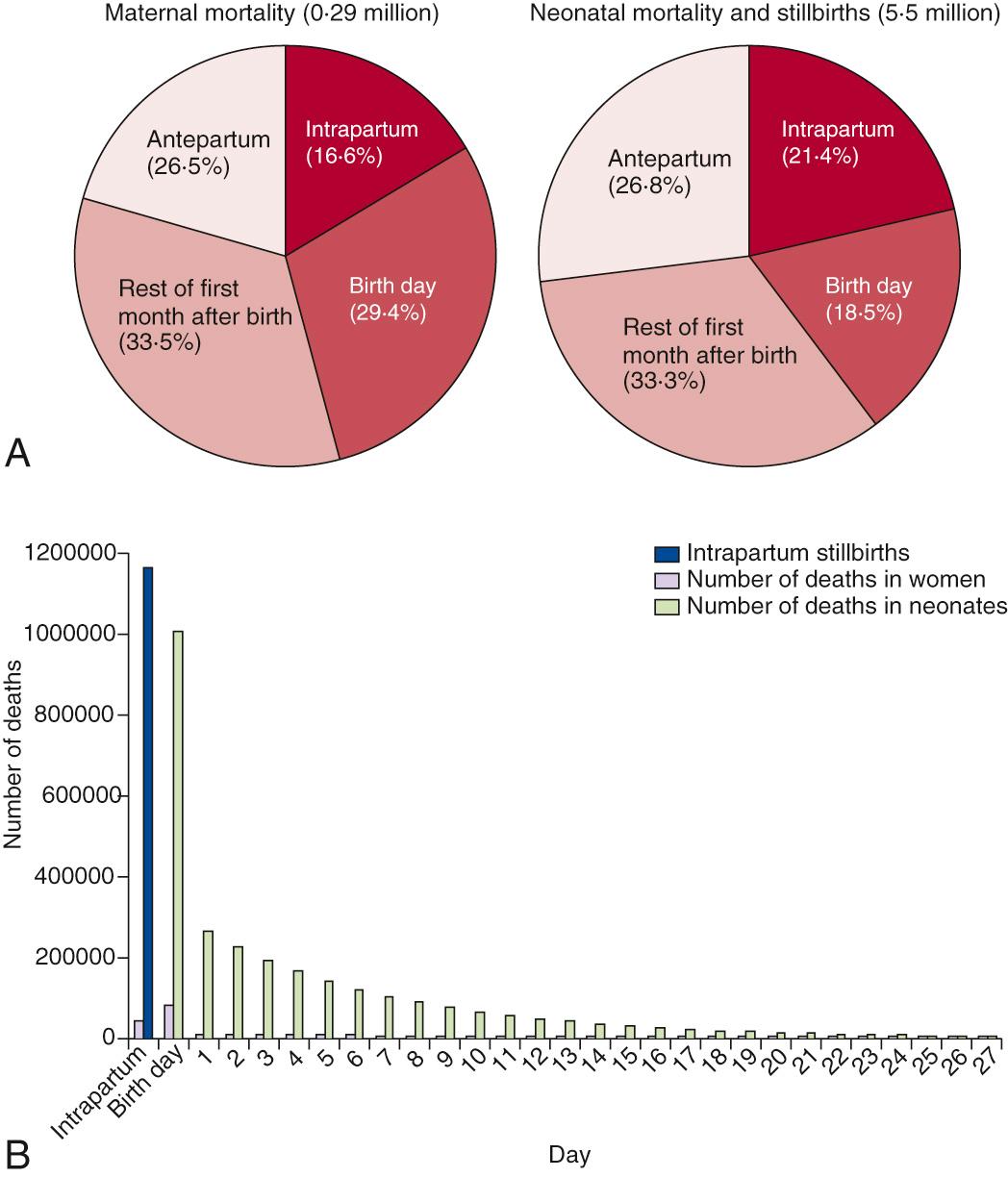
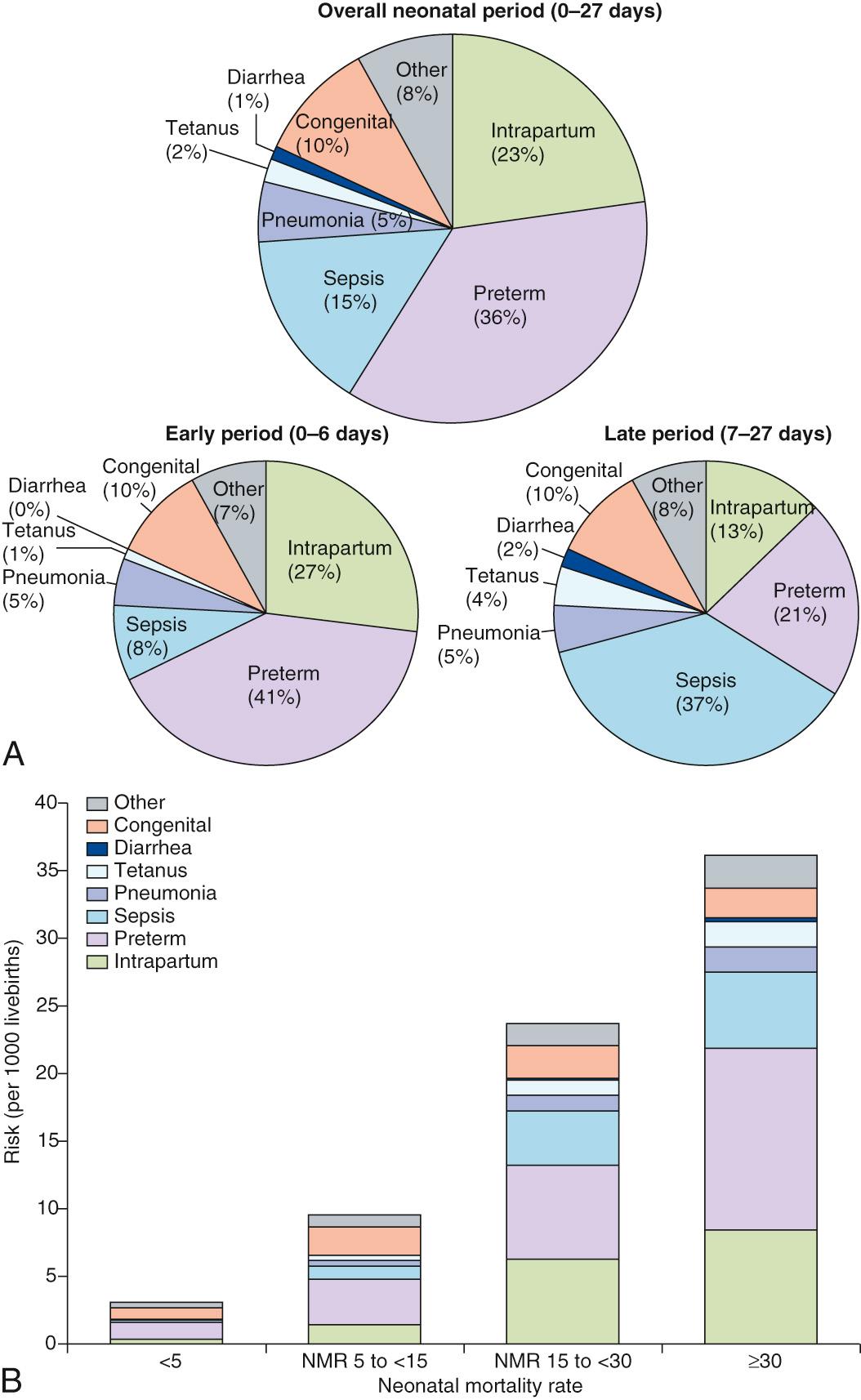
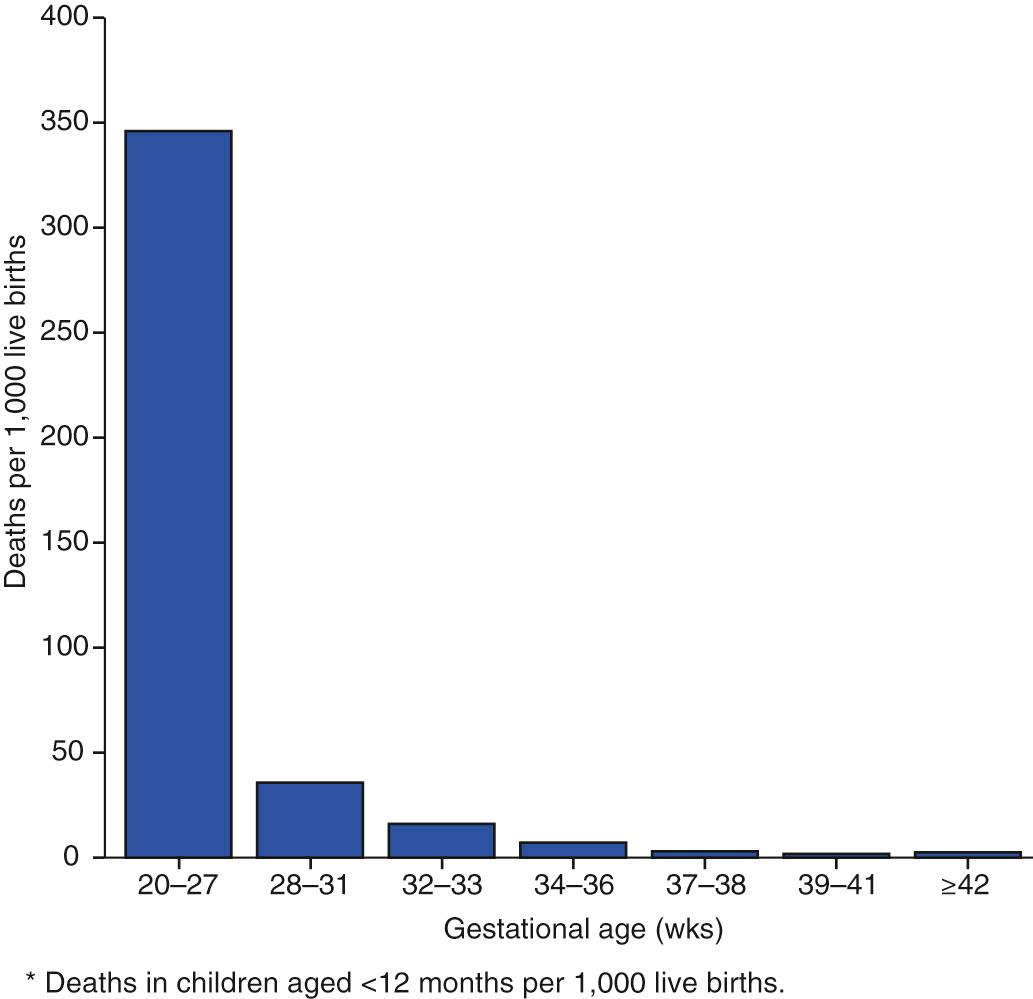
Over the past century, infant mortality rates have declined in the United States and across most of the world. However, rates continue to differ worldwide ( Fig. 112.4 ). In general, the highest rates are observed in low-resource, developing countries. However, the United States remains an anomaly among nations in the developed world. Table 112.1 shows infant mortality rates from a representative sample of developed countries. The rates are adjusted to exclude deaths before 24 wk gestation to account for potential variation in definitions of live births that might occur at the threshold of viability, to ensure comparability. Beginning in the 1980s, U.S. rates began to consistently exceed other developed nations; in 2015, U.S. infant mortality rates were >2-fold higher than in many developed countries. A wide range of infant mortality rates is also observed, with the highest rates in the Southeast United States and lower rates in the Upper Midwest, the Northeast, and the West Coast.
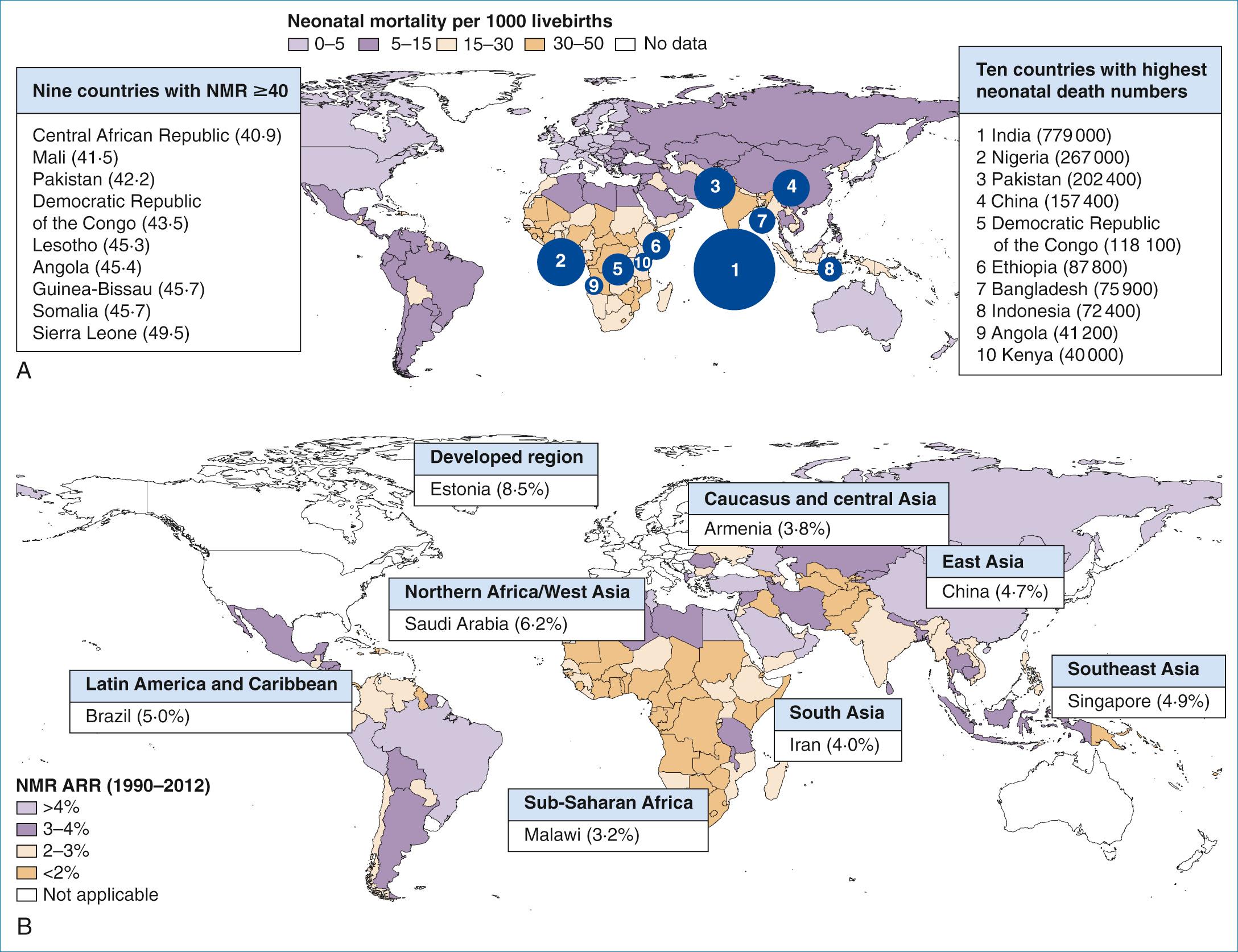
| COUNTRY | IMR |
|---|---|
| Finland | 2.3 |
| Japan | 2.3 |
| Greece | 3.8 |
| United Kingdom | 4.2 |
| United States | 6.1 |
In the United States and Europe, most infant deaths fall into 1 of 3 major categories of causation: preterm birth, congenital malformations, and sleep related (e.g., SIDS). Infections, trauma, birth asphyxia, and injuries account for the remainder. The pattern differs in the developing world, where infections and asphyxia predominate. When considered based on the classification of infant cause of death by the International Classification of Diseases, Tenth Revision , congenital malformations are the leading cause, followed by disorders related to prematurity and low birthweight. Nonetheless, preterm birth rather than congenital malformations accounts for the majority of infant deaths in the United States, when deaths from unique complications of prematurity are included.
The U.S. preterm birth rate is substantially higher than in other developed countries and best explains elevated U.S. infant mortality rates. Worldwide, preterm birth rates display a tight concordance with infant mortality rates, providing further evidence for the importance of this linkage ( Fig. 112.5 ). In the era of modern neonatal intensive care, most preterm birth deaths occur among the earliest gestational ages (<28 wk), and within the 1st few days of life, because of profound respiratory immaturity and insufficiency. The remaining preterm birth deaths result from morbidities associated with prematurity. Late preterm birth (35-36 wk gestation) is not a significant contributor to infant mortality.
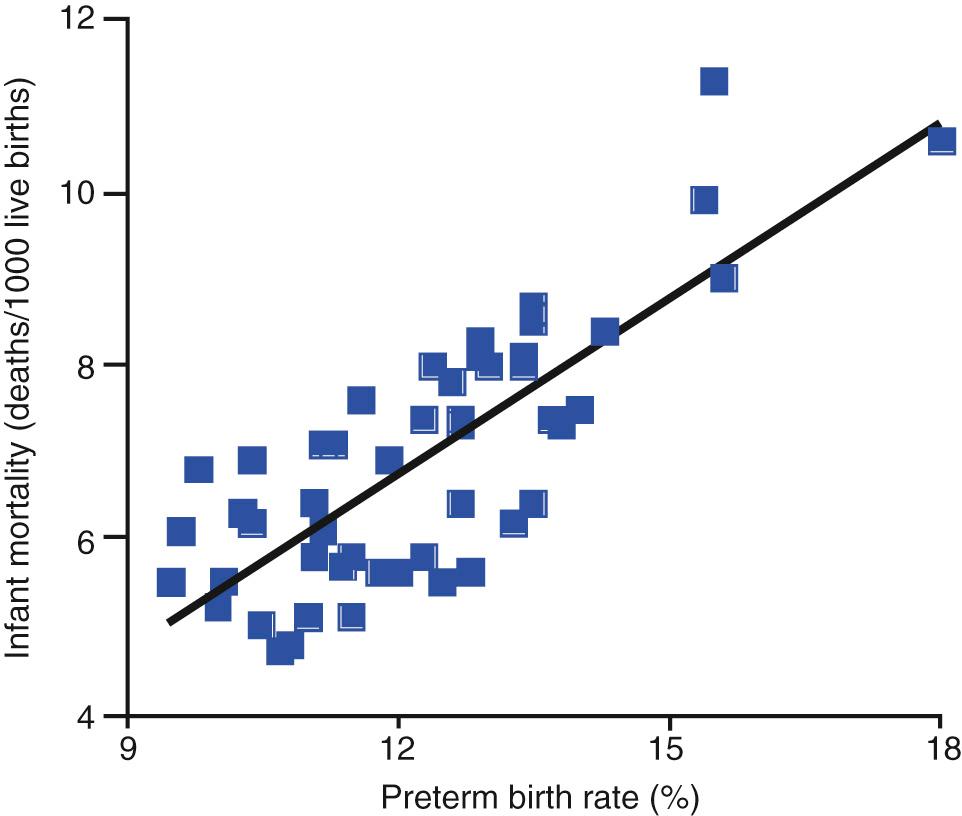
International variation in live-birth registration practices may explain the elevated U.S. infant mortality. Although these technical explanations deserve further investigation, they should not be used to justify high U.S. infant mortality. In the United States, where live-birth registration practices are consistent, substantial variation in infant mortality and preterm birth rates implies systemic rather than technical explanations.
Become a Clinical Tree membership for Full access and enjoy Unlimited articles
If you are a member. Log in here